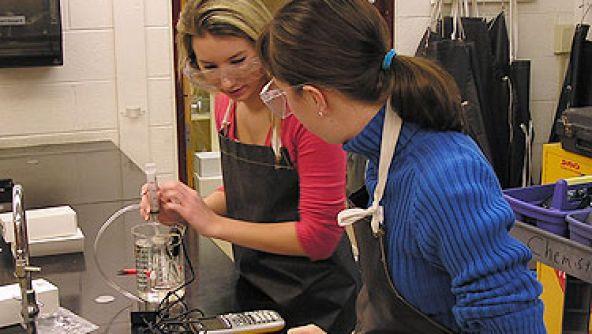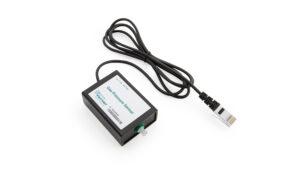When Greg Dodd began teaching high school chemistry 34 years ago, his classes’ experiments in Boyle’s Law weren’t exactly elegant. Typically, students at West Virginia’s George Washington High School attempted to gauge the pressure and volume of a gas by inserting a large, sealed syringe into a block of wood, plunger side up, then steadily adding piles of bricks or books to exert pressure on the gas contained within. Inevitably, the stacks came tumbling down, the experiment was ruined … and the frustrated students had to start all over again.
Then in 1995, Dodd was introduced to Vernier’s data collection tools. In no time, the bricks, syringe, and books went the way of eight-track tapes.
“If the experiment doesn’t work out the first time, the kids can do it four or five times during one lab; it’s that quick.”
“Now, my students basically have one hand on a Vernier Gas Pressure Sensor and the other on a TI Handheld, and in five minutes or less they have a beautiful Boyle’s Law curve,” Dodd marvels. “If the experiment doesn’t work out the first time, the kids can do it four or five times during one lab; it’s that quick. The old method would take the entire period, just to gather the data once! Using the Vernier products makes the experiment so much easier, and much more efficient.”
Ask Dodd what he considers the biggest benefits of the Vernier tools, and his answer is quick and emphatic: “Since the Vernier LabPros and probes allow students to gather data dramatically faster, they can spend much more time actually analyzing the data,” he says. “Realistically, before we had tools like this, high school chemistry labs hadn’t really changed since the turn of the last century. You spent hours and hours trying to collect your data, and then it took forever to it crunch all afterwards. Vernier makes everything faster, cleaner, and simpler, which gives the kids a much better chance to really look at their results.”
Dodd’s classes now gather data from their experiments using Vernier’s probes and LabPros, along with TI Handhelds. The students then connect their calculators to any of the four computers in the lab, and dump their raw data into Logger Pro software. In no time, Dodd says, students can then create and print out colorful graphs that illustrate their results, and attach the hard copies to their lab reports to hand in for grading.
“Now my students can gather their data so much more quickly. That means we can spend a lot more time talking about the results, and doing our analysis.”
Says Dodd, “Vernier has sure made this whole process a lot different – and easier – than when I went to school. I remember trying to draw graphs by hand, and fumbling around with semi-log graph paper. It took forever! Now my students can gather their data so much more quickly. That means we can spend a lot more time talking about the results, and doing our analysis.”
For the last decade, Dodd has been spreading the word about Vernier products to his colleagues in education. He has trained scores of teachers throughout Kanwha County and West Virginia, showing them how to incorporate the use of LabPros, Vernier probes, TI Handhelds, and computers into their curriculum. In addition, Dodd has given many other AP Chemistry teachers a look at the various technology tools during numerous summer workshops. He believes the use of such aids is nearly as beneficial to teachers as it is to students.
“For a teacher who’s been doing things a certain way for a number of years,” Dodd observes, “it’s really refreshing to shake things up a little. Learning how to use the Vernier products is like a great breath of fresh air. Besides … as teachers we really have to stay on our toes! Using technologies like Vernier’s offers a new, really interesting way of doing things. Their tools are far more effective than lecturing, or using worksheets. Now my students spend much more time learning by doing.”


